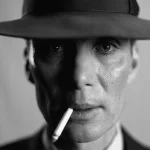Home Video Hovel: Belladonna of Sadness, by Dayne Linford
Belladonna of Sadness was the last release of the Mushi Production animated motion picture studio. It was founded by legendary Japanese animator Osamu Tezuka, who is often credited with giving birth to anime with his most successful property, Astro Boy. Belladonna of Sadness is a great deal further from that. Created in a maelstrom of ambition, desperation, debt, and ultimately bankruptcy, the fact that it survived at all is stunning, that it was finished in the first place even more so. Besides being plagued by production problems, it’s also harrowing subject matter. I think myself fairly familiar with animated film, yet can think of no other like Belladonna, and am struggling to find any corollaries in live-action features. One of the most disturbing films ever made; powerful, uncomfortable, completely unhinged, Belladonna is the unique gift to cinema of the death of Tezuka’s company, and is one of the single most daring, provocative films I’ve ever seen.
You can get an idea with just the basic plot – adapted from French writer Jules Michelet’s Satanism and Witchcraft, the film concerns Jeanne (voiced by Aiko Nagayama), a French girl celebrating her wedding to Jean (Katsutaka Ito), a poor peasant. Theirs is a happy, hopeful marriage. They travel to visit the local baron (Masaya Takahashi), presenting a small offering for his blessing. Instead, the baron takes Jeanne herself as his offering, gang-raping her with his lackeys in a scene that defies for impact any other such depiction in cinema. Thrown out of the castle, Jeanne returns to Jean, who tries to comfort her with an admonition to forget the past, but, dozing off that night, he is seized by panic and awakes to find his hands at her throat, nearly strangling her before, terrified and ashamed, he runs off into the night. The idyll is shattered, and there’s no hope of return, especially as Jeanne’s trauma revisits her later that night in the form of a small, phallic devil, voiced by the inimitable Tatsuya Nakadai (Ran), whose temptations take the form of sensual, psychosexual pleasure, and who begins to reenact the rape, this time with Jeanne as a less-unwilling participant. She participates partially because, despite all, she is a sexual being as much as anyone else. The devil promises her something far more tempting – not only a chance at happiness with Jean, but also a chance at revenging her wrong at the baron’s hands.
If that sounds like a lot, it’s not even the half of it. Sexuality, both willing and unwilling, is the primary vehicle of Belladonna’s storytelling, Jeanne’s curse and weapon, an aspect of her as a woman and a person, and a tool for her dehumanization, through herself and others. As she gives in more and more to the devil’s temptations, his advances upon her become more and more forceful, more dominating, more invasive. Her fortunes in life improve, only to again be dashed through the petty machinations – often completely unaware of her existence – of the baron, his wife, and their lackeys, forcing her yet again to accept the devil’s ministrations. This film gives no quarter, except in the heartbreaking beauty of its animation, which only heightens and makes more vicious the brutality of what’s portrayed.
Especially compared to the current Disneyfication of all things, accompanied by the standard blandness of the Pixar “look”, a film like Belladonna, unique to the piece and derived entirely from and in service to the thematic structure of it, is a bracing though happy shock to my complacency. The fingerprints of its creators, driven by stress, panic and desperation in the attempt to finish this most strange film before the studio collapsed, are everywhere. Lead animator Kuni Fukai delivers a visual tapestry so strong it lays out an argument for the mark of an auteur, creating every image we see down to the brushstroke. He’s only matched by Eiichi Yamamoto, the director of the film, taking the helm even as Tezuka, the studio head, increasingly released the reins on the entire studio. Even more so than the famous color palettes and editing structures of live-action filmmaking, the particular formal decisions, sense of motion, and general mise-en-scene of animated filmmaking is the be-all-end-all of the viewing experience. Under Yamamoto’s incredible direction, Belladonna uses all these elements, and more, to the hilt, pushing them past the limits of what’s now acceptable, let alone when the film was released in 1973.
Realized largely in watercolor pastels, the animation lends a painterly quality to the film as a whole, an aesthetic that really comes home during the many pans across a still canvas, moving like a scroll from right to left and revealing the greater scope of the depiction as it goes. Doing so, it largely eschews the standard, hyperactive motion of most animated features, alternating between scenes of violent, quick movement, and still shots, as if depicting a famous French folktale, painted numerous times from many perspectives, then interrupted by the harsh gasp of real suffering. This serves not only to enhance the sense of historical specificity, which must exist due to the many surrealist events portrayed and character depictions throughout, but also evokes classical art, tarot cards, and religious wood-carvings, serving to save the motion for when it’s most needed – scene of such stark brutality and surrealist psycho-horror I can scarcely describe them.
Which gets to the sexual politics of the film, so tangled, but in a way that feels accurate to lived experience, particularly one of sexual violence. In this way, Belladonna very much belongs to the category of queer filmmaking, not because it depicts non-traditional sexual and romantic relationships – there are some, but the film is very much about heterosexual sexuality – but because it investigates sex not only as a mechanism of pleasure, yes, but mostly of power, which all the characters engage in, to varying degrees of complexity and complicity. It’s also queer in the way it portrays the varying positions of the characters in the film, which continually evolve, particularly those of Jeanne, Jean, and the devil himself, whose characterization is staggeringly complex and who possesses incredible cosmic powers and knowledge but still seems subservient to the much more basic, petty, animalistic brutality and evil of the local baron. Belladonna never loses sight of the real, lived-in experience of those power structures, and never lets us free of them, either. We’re trapped with Jeanne, and ache for her pain, feel disturbed and slightly aroused as she does, and wish for the release she wishes for. Largely through the power of the imagery, particularly in the violence inflicted upon her, we come to identify with and feel for her completely.
The ending falters somewhat, particularly with a reference to the French revolution that was added to a censored edition re-released in 1979, which, though Cinelicious is offering the film completely uncensored, is included on this Blu-ray. I can’t really speak to the history of the film entirely, and perhaps we don’t have another ending, or the original ending was only slightly different. Even if a little tacked-on and strangely preachy, it seems a fitting ending for a film so consumed with sexual body politick. Regardless, Belladonna is a complete triumph of a film, and accomplishes in its short 87 minutes more than most filmmakers, or even studios, do in their entire existence. It’s a film that must be seen, if only to inspire the creation of more films like it, similarly daring, powerful, and provocative, as Jeanne inspires the consciousness of women like her, sexual but empowered and free, and seeing no contradiction in those terms, and only horror in their attempted violation.






























